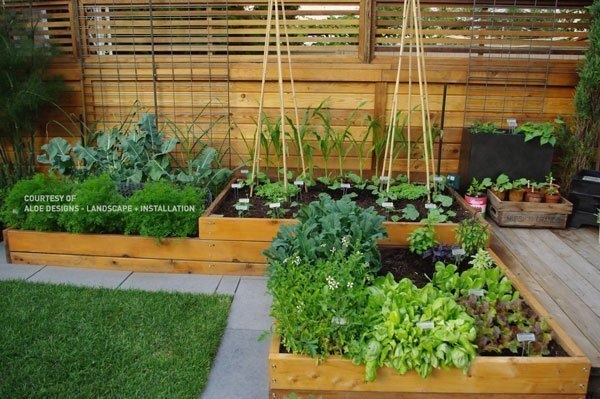Back
Back
Back
Back
Back
Back
Back
Back
Back
Back
USA & Canada
Elevate Your Garden Game With Planter Boxes

Sign up now for our DIY Project Newsletter

What’s stopping you from gardening today? Do you live in an urban area, have a small yard or is your soil rocky and full of clay? Any of these challenges could make you believe that planting a garden simply isn’t in the plans this year, but that doesn’t have to be the case. You just have to get a little more creative and turn to raised beds and planter boxes to enjoy the vegetables, herbs and flowers you crave. An amazing 78 million U.S. households grow gardens, according to the Garden Writer’s Association. Wouldn’t you like to join them?
If you’ve never considered using a raised bed or planter box to garden before, these tools offer many advantages such as high yields, easy gardening and a longer overall gardening season. Before you get to work on this rewarding DIY project, though, ask yourself these questions:
Where will I place my garden beds?
This may be determined by the specific space you have available. If you have a few options, though, look for the sunniest spot possible. Remember that larger beds will have greater yields, but they also require more work. It’s best to build your beds to match the gardening time you have available.
What material will I use to build my beds?
There are many options in today’s market; however, many experienced gardeners build their beds from untreated Western Red Cedar because it is naturally rot resistant. This provides instant longevity without treatment. And for new builders, Western Red Cedar is affordable, lightweight and easy to work with – all important considerations when starting your first project. Plus, if you’re an environmentally conscious gardener, Western Red Cedar is sustainably harvested. The harvesting, manufacturing and transportation of this material all generates fewer greenhouse emissions than other types of materials, so you can go green in every stage of your project. You can learn more at Realcedar.com.
What’s the right size bed for my space?
As you’re planning your bed size, remember you’ll need to work in the space as well. The garden bed’s width can range from 2 to 4 feet and the ideal length is 8 to 12 feet. No matter the dimensions you choose, make sure your beds and planters are at least 6 inches deep; 12 inches is optimal for allowing the roots to grow deep and strong.
Is my soil ready?
Before you start digging around, make sure your soil is ready for success. Dig down 6 to 8 inches and loosen the soil. Then create a mixture of top soil and organic material – such as compost or manure. Once the soil is ready, it’s time to start watering, weeding and fertilizing.
All of these tasks become much easier with garden beds and planters because you will be working with a smaller space and won’t need to do so much bending. You may discover your garden quickly dries out in the sun, and if this is the case, a layer of mulch can be just the solution to help your soil retain moisture.
What are my plans for next year?
Harvesting is one of the greatest joys of gardening. Once you’ve finished this year’s harvest, you can set your focus on next year. Prep your beds for winter just as you would a traditional garden, and if you’ve built your garden beds from Western Red Cedar you don’t need to do anything to prep the boxes for the colder months. Western Red Cedar resists warping and twisting, ensuring your beds will look and function just as well next year… and beyond.
Visit our Outdoor Living section for free downloadable plans and how-to videos.
© 2025 All rights reserved
Gatsby Website Development by Jambaree